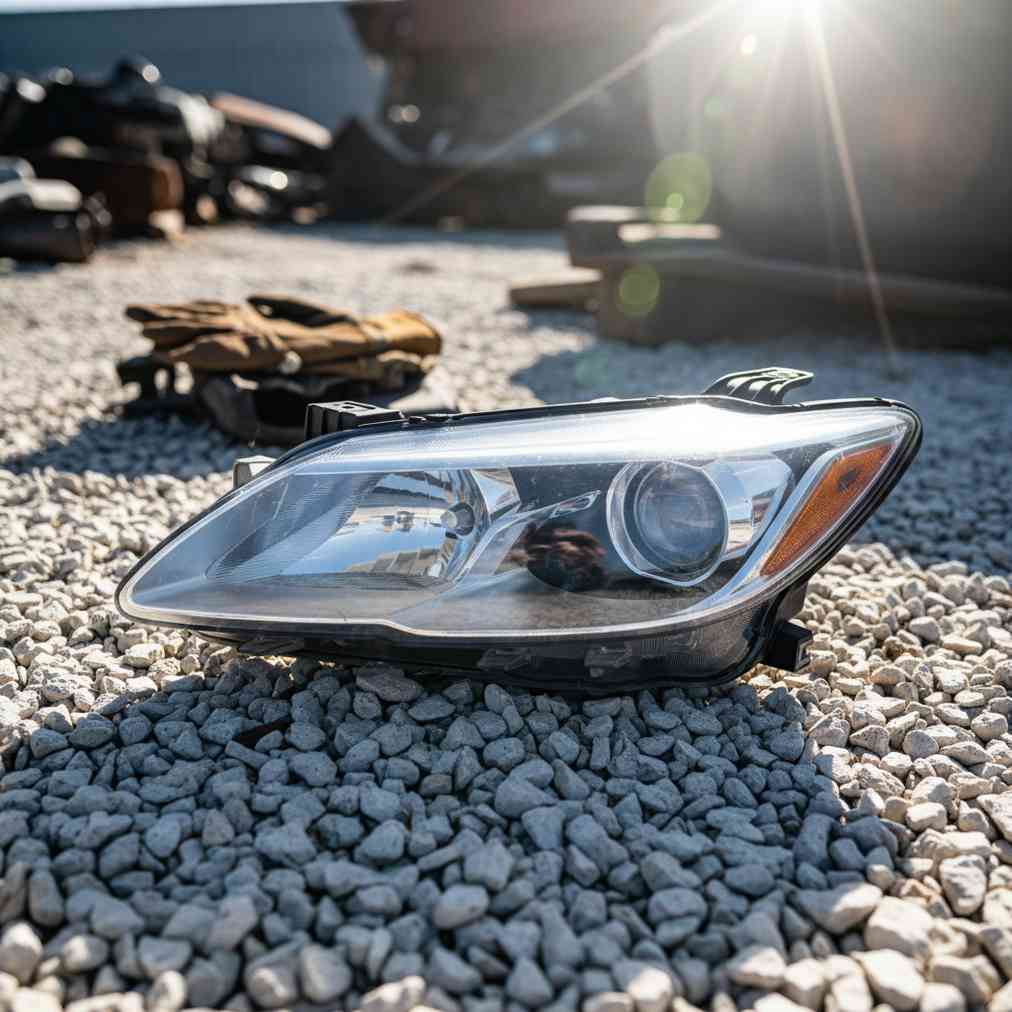Understanding Salvage Yard Pricing Structures
Before entering any negotiation at a self-service salvage yard, it’s crucial to understand the pricing landscape. Not all yards operate the same way, and recognizing the difference between corporate chains and owner-operated facilities can make or break your negotiation success.
Corporate chains like LKQ Pick Your Part typically have standardized pricing systems with limited flexibility, while smaller, independent yards often allow for more creative pricing arrangements. According to discussions on automotive forums, the negotiability of parts prices can vary dramatically based on the yard’s business model and local market conditions.
Fixed vs. Flexible Pricing Categories
| Part Type | Price Flexibility | Negotiation Potential |
|---|---|---|
| High-demand parts (engines, transmissions) | Usually fixed | Low – prices are well-established |
| Body panels and trim pieces | Moderate flexibility | Medium – especially with damage |
| Assemblies and bulk items | Often bendable | High – yards prefer volume sales |
| Common hardware | Usually fixed | Low – minimal profit impact |
Research and Preparation: Your Foundation for Success
Successful negotiation starts long before you arrive at the junkyard near me. Proper preparation involves understanding market values, part compatibility, and current availability.
Essential Pre-Visit Research
- Market value analysis: Research both new and used part prices online
- Part identification: Know exact year, make, model, and part specifications
- Condition assessment: Understand what constitutes acceptable wear vs. damage
- Alternative sources: Identify competing yards and their pricing
- Compatibility research: Know which other vehicle models share the same parts
When buying specialized components like used turbochargers or power brake boosters, this research becomes even more critical as these parts have specific performance requirements.
Proven Negotiation Tactics and Strategies
Expert salvage yard negotiators employ specific tactics that consistently yield better prices. These strategies focus on creating win-win scenarios where both you and the yard benefit from the transaction.
The Bundling Strategy
Bundling multiple parts is consistently the most effective negotiation tactic at self-service yards. Yards prefer selling multiple items in one transaction as it reduces their processing costs and moves inventory faster.
“If I take this alternator, the brake master cylinder, and the mirror assembly, can you give me a better price for the whole lot? I’m looking at about $200 total if bought separately.”
This approach works particularly well when combining high-value items with slower-moving parts. For example, pairing a high-value auto part with common body panels or interior components.
Cash Leverage Technique
Cash negotiations carry significant weight in salvage yards, especially for larger purchases. The immediate payment eliminates processing delays and credit risks for the business.
- Exact amount strategy: Bring the precise cash amount you’re willing to spend
- Immediate closure: Emphasize quick transaction completion
- Final offer presentation: Present your cash offer as your absolute limit
Condition-Based Negotiation
Thoroughly inspecting parts and identifying defects provides legitimate grounds for price reduction. This strategy requires knowledge of what constitutes acceptable wear versus problematic damage.
When examining items like used fenders or car doors, document any dents, rust, or missing components that would require additional repair work.
Effective Communication Scripts and Approaches
The way you communicate your negotiation requests significantly impacts your success rate. Professional, respectful approaches consistently outperform aggressive or demanding tactics.
Opening Negotiation Scripts
| Situation | Recommended Script | Key Elements |
|---|---|---|
| Testing price flexibility | “I see the price is $X. Is there any flexibility on this price today?” | Polite inquiry, open-ended question |
| Bulk purchase discount | “I’m taking several parts today. Can you work with me on the total?” | Volume emphasis, partnership language |
| Condition-based reduction | “I noticed some rust here and a missing bolt. Would you consider adjusting the price?” | Specific defects, reasonable request |
| Cash offer closing | “I have $X cash right now. If you can take that, I’ll buy it immediately.” | Immediate payment, final offer |
Building Rapport with Yard Staff
Long-term relationships with salvage yard employees often yield better prices than one-time negotiations. Regular customers frequently receive informal discounts and advance notice of new inventory arrivals.
- Show appreciation: Thank staff for their expertise and assistance
- Be respectful: Treat employees as knowledgeable professionals
- Follow through: Complete purchases when you commit to buying
- Refer others: Bring friends and mention positive experiences
Timing Your Negotiations for Maximum Success
Strategic timing can significantly improve your negotiation outcomes. Understanding when yards are most motivated to sell helps you leverage situational advantages.
Optimal Negotiation Windows
Weekday visits typically offer better negotiation opportunities than busy weekends. Staff have more time to consider offers and discuss pricing options when they’re not managing crowds of customers.
End-of-day timing can work in your favor, especially for cash transactions. Yards may be more willing to accept reasonable offers rather than hold inventory for uncertain future sales.
Seasonal considerations also affect pricing flexibility. Parts in lower demand during specific seasons may have more negotiation room. For example, window replacements might be more negotiable during winter months when fewer people are working on cosmetic repairs.
Understanding Which Parts Have Negotiation Potential
Not every part in a salvage yard has the same negotiation potential. Understanding supply and demand dynamics helps you focus your bargaining efforts where they’re most likely to succeed.
High-Negotiation Potential Parts
- Slow-moving inventory: Parts that have been in the yard for extended periods
- Damaged components: Items with visible wear, corrosion, or missing pieces
- Seasonal items: Parts in lower demand during current weather conditions
- Complete assemblies: Large components that yards prefer to sell as units
- Common parts: Items with high availability across multiple vehicle models
When looking for specific components like OEM Toyota Camry parts or Honda CR-V components, remember that popular vehicle parts often have established market values that limit negotiation room.
Fixed-Price Parts
Certain components typically have non-negotiable pricing due to established market values and consistent demand:
- Catalytic converters: High scrap metal value creates firm pricing
- Airbags: Safety-critical components with established market rates
- ECU/PCM modules: High-value electronic components
- Transmissions and engines: Core components with well-known values
For these items, focus on ensuring you’re getting fair market value rather than trying to negotiate significantly below standard pricing.
Advanced Negotiation Techniques
Experienced salvage yard customers employ sophisticated strategies that go beyond basic price discussions. These techniques involve understanding business motivations and creating mutually beneficial arrangements.
The Competition Reference Strategy
Referencing competitor pricing can be effective when done professionally and honestly. However, this strategy requires genuine research and the willingness to follow through on alternative options.
“I found this same part for $X at another yard, but I’d prefer to buy from you today if you can match or get close to that price. Your yard is more convenient for me.”
This approach works best when you’ve actually researched alternatives and can provide specific details about competing offers. Be prepared to walk away if the yard can’t meet your price expectations.
Value-Added Negotiation
Instead of focusing solely on price reduction, consider negotiating for additional value. This might include:
- Installation hardware: Bolts, clips, or brackets needed for installation
- Related components: Small parts that work with your main purchase
- Tool lending: Access to specialized removal tools
- Extended warranties: Longer return periods or exchange options
Common Negotiation Mistakes to Avoid
Understanding what doesn’t work in salvage yard negotiations is just as important as knowing effective strategies. Certain approaches consistently backfire and can damage your relationship with yard staff.
Counterproductive Behaviors
- Acting superior: Don’t pretend to know more than the yard staff
- Being aggressive: Demanding or hostile behavior kills negotiations
- Making unrealistic offers: Lowball offers damage your credibility
- Rushing decisions: Showing desperation eliminates your leverage
- Ignoring posted policies: Disrespecting yard rules creates conflict
According to salvage industry experts cited in automotive pricing guides, maintaining professionalism throughout the negotiation process is essential for long-term success.
Maximizing Your Salvage Yard Investment
Successful negotiation extends beyond individual transactions to building lasting relationships that provide ongoing benefits. Smart salvage yard customers think strategically about their long-term parts needs.
Building Long-Term Value
Consider establishing relationships with multiple yards to increase your negotiating power and parts availability. When yard staff know you’re a serious, repeat customer, they’re more likely to offer favorable pricing and notify you about new arrivals that match your needs.
This approach works particularly well for project cars or when you need multiple components over time. Whether you’re seeking Chevy Silverado transmission parts or planning extensive bodywork with salvage fenders, established relationships provide ongoing advantages.
Alternative Value Strategies
If you’re unable to get the parts you need at acceptable prices, consider these alternatives:
- Sell unwanted vehicles: Get an instant quote for junk car removal to fund parts purchases
- Part-out projects: Buy complete vehicles for major component removal
- Seasonal timing: Wait for better prices during low-demand periods
- Group purchases: Coordinate with other enthusiasts for bulk buying power
Legal and Safety Considerations
While focusing on negotiations, don’t forget the importance of safety and legal compliance when purchasing salvage parts. Understanding warranty limitations and proper installation requirements protects both your investment and your safety.
Always inspect parts thoroughly before purchase, especially safety-critical components. Some items like dangerous car parts should never be purchased used, regardless of the negotiated price.
Conclusion: Mastering the Art of Salvage Yard Negotiations
Successful negotiation at self-service salvage yards combines preparation, timing, professionalism, and relationship building. While not every part or every yard offers negotiation opportunities, understanding when and how to negotiate can lead to significant savings on quality used auto parts.
Remember that negotiation is about creating win-win scenarios where both you and the salvage yard benefit. Focus on building long-term relationships, maintaining professional communication, and understanding market dynamics. With practice and patience, you’ll develop the skills to consistently secure better prices while supporting the valuable service that recycled auto parts provide to vehicle owners and the environment.
Whether you’re a weekend warrior working on project vehicles or a professional mechanic seeking cost-effective repair solutions, mastering salvage yard negotiation skills will serve you well throughout your automotive journey. Start with these proven strategies, adapt them to your local market conditions, and watch your parts budget stretch further than ever before.





Leave a Reply
You must be logged in to post a comment.